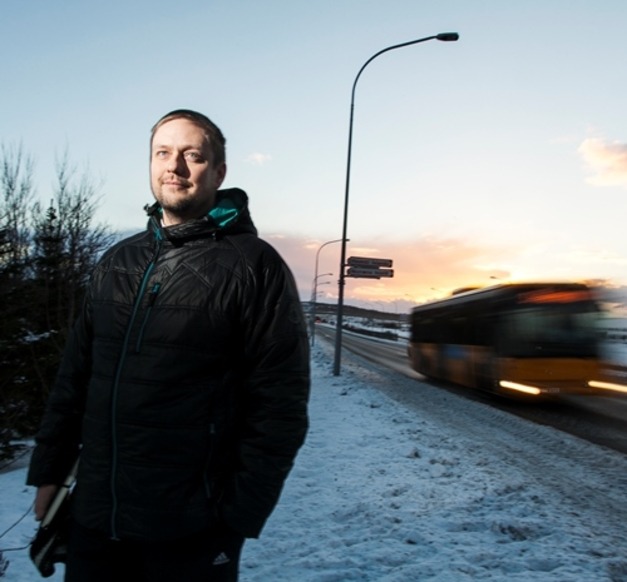We study the impact of belts of vegetation along streets with high traffic on the levels of pollution caused by airborne particles, i.e. whether and how much vegetation belts reduce airborne particle pollution,” says Þröstur Þorsteinsson, Associate Professor of Environmental and Resource Management. Þorsteinsson has taken on this threat, familiar to natives of Reykjavík, a threat so prevalent that in certain weather conditions people are advised to stay indoors.
Þorsteinsson‘s study examines how vegetation affects particle pollution in different ways. “One possibility is that vegetation functions as a kind of filter for the particles. Another one is that vegetation reduces the transfer of the material, almost operating as a kind of wall. This would entail that pollution would be increased on the roadside of the vegetation compared to similar places where there are no vegetation belts,” Þorsteinsson explains.
Þorsteinsson points out that the adverse effects of particles on health are becoming better and better known.
“Significant decreases in traffic are unlikely in the close future. A lot of research has indicated that vegetation can reduce air pollution. Studies on the direct impact of vegetation have nevertheless been inconclusive, so conducting such studies in Iceland is important. Particle pollution from traffic can be quite serious here,” says Þorsteinsson, who has examined the quality of air from a variety of perspectives, including data from satellites. “I have also collaborated extensively with doctors and scientists in the field of public health,” says Þorsteinsson.
The research is yet to yield conclusive results, partially due to the wet weather in Reykjavík in the summer of 2014. “The weather this summer prevented us from measuring the air quality; we did not get two dry days in a row. However, we will continue this winter by studying pine trees and leafless trees, and then next spring and into the summer,” Þorsteinsson explains.
He is confident concerning the importance of his work. “The conclusions of the project will benefit concerning the design of traffic infrastructure and in public health influence of particle pollution. This project will also provide information on the distribution of particles by size, and thus the public will be better informed on the possible health effects of this pollution,” Þorsteinsson concludes.



